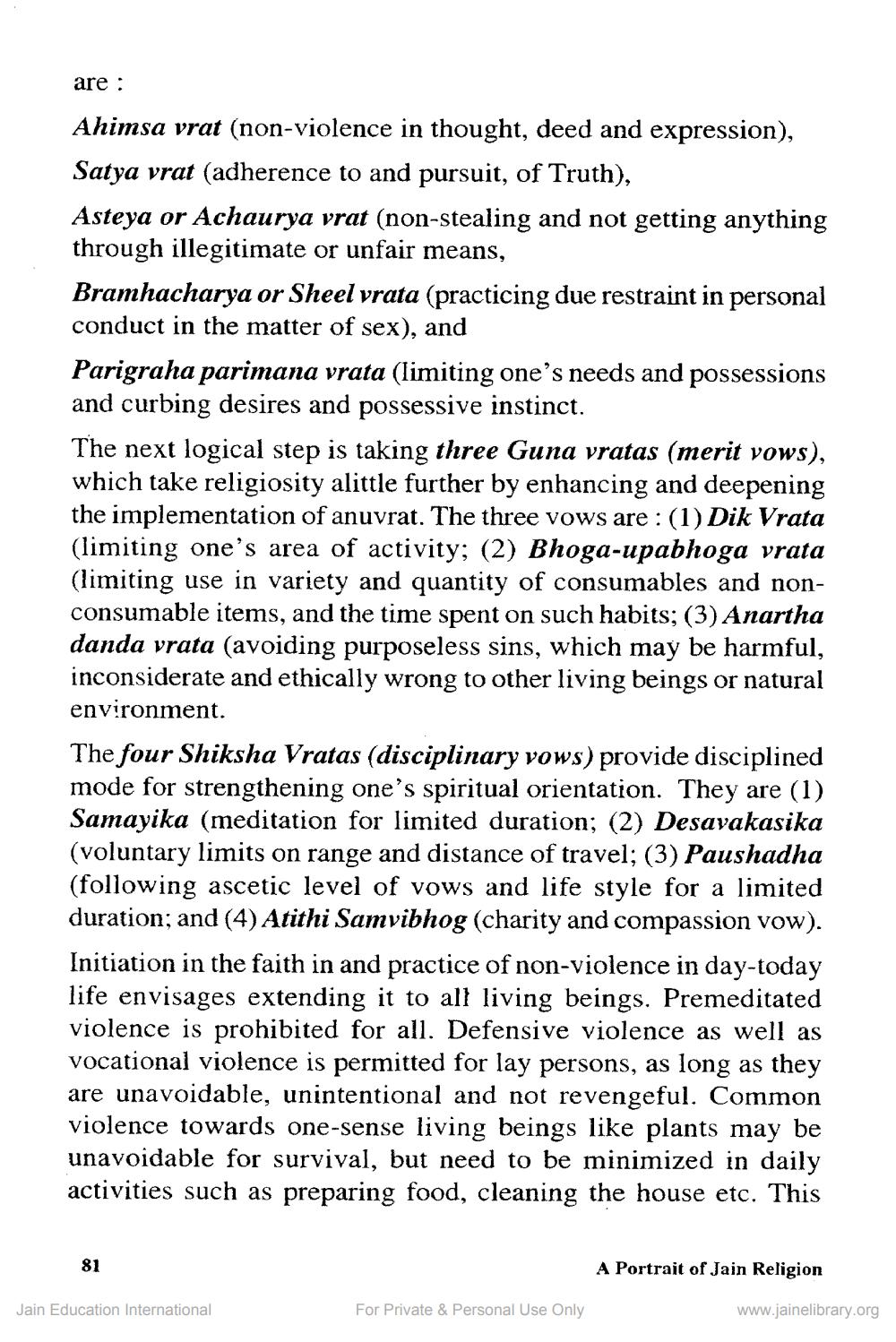________________
are :
Ahimsa vrat (non-violence in thought, deed and expression), Satya vrat (adherence to and pursuit, of Truth), Asteya or Achaurya vrat (non-stealing and not getting anything through illegitimate or unfair means, Bramhacharya or Sheel vrata (practicing due restraint in personal conduct in the matter of sex), and Parigraha parimana vrata (limiting one's needs and possessions and curbing desires and possessive instinct. The next logical step is taking three Guna vratas (merit vows), which take religiosity alittle further by enhancing and deepening the implementation of anuvrat. The three vows are: (1) Dik Vrata (limiting one's area of activity; (2) Bhoga-upabhoga vrata (limiting use in variety and quantity of consumables and nonconsumable items, and the time spent on such habits; (3) Anartha danda vrata (avoiding purposeless sins, which may be harmful, inconsiderate and ethically wrong to other living beings or natural environment. The four Shiksha Vratas (disciplinary vows) provide disciplined mode for strengthening one's spiritual orientation. They are (1) Samayika (meditation for limited duration; (2) Desavakasika (voluntary limits on range and distance of travel; (3) Paushadha (following ascetic level of vows and life style for a limited duration; and (4) Atithi Samvibhog (charity and compassion vow). Initiation in the faith in and practice of non-violence in day-today life envisages extending it to all living beings. Premeditated violence is prohibited for all. Defensive violence as well as vocational violence is permitted for lay persons, as long as they are unavoidable, unintentional and not revengeful. Common violence towards one-sense living beings like plants may be unavoidable for survival, but need to be minimized in daily activities such as preparing food, cleaning the house etc. This
A Portrait of Jain Religion
Jain Education International
For Private & Personal Use Only
www.jainelibrary.org




